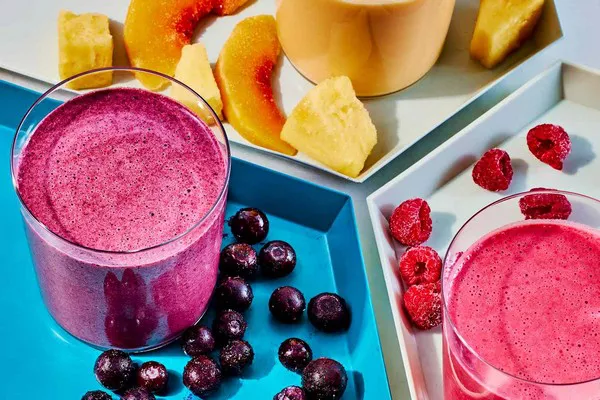Chinese food is beloved worldwide for its rich flavors and variety. However, not all Chinese dishes are created equal when it comes to health. Some options are loaded with calories, sodium, and unhealthy fats, while others are packed with vegetables, lean proteins, and healthy cooking methods. So, what are the healthiest Chinese food choices? Let’s break down the best options, the healthiest cooking methods, and how to make wise choices when ordering or preparing Chinese food.
1. Stir-Fried Dishes
Stir-frying is one of the healthiest cooking techniques in Chinese cuisine. This method involves cooking food quickly in a small amount of oil over high heat. The quick cooking process helps preserve nutrients in vegetables while reducing the amount of oil used compared to deep frying.
Best Choices:
Stir-fried vegetables: Dishes like stir-fried broccoli, snow peas, bok choy, and Chinese cabbage are low in calories and high in fiber and vitamins. They are also rich in antioxidants, which support your immune system.
Chicken or shrimp stir-fries: Choosing lean proteins like chicken or shrimp in stir-fries adds protein without too much fat. These dishes are often paired with vegetables, offering a balanced meal.
What to Avoid:
Stir-fries that are drenched in heavy sauces like sweet and sour sauce or heavy soy-based sauces. These can be high in sugar and sodium. Opt for lighter sauces or ask for the sauce to be served on the side.
2. Steamed Dishes
Steaming is another healthy cooking method commonly used in Chinese cuisine. Unlike frying, steaming requires no oil and helps retain the natural flavors and nutrients of the ingredients. Steamed dishes tend to be lighter and more nutritious.
Best Choices:
Steamed fish: Fish, such as steamed salmon, cod, or tilapia, is a great choice. It’s rich in omega-3 fatty acids, which are beneficial for heart health. Steamed fish is often seasoned with fresh ginger, garlic, and scallions, which add flavor without extra calories.
Steamed dumplings: While dumplings can be high in calories if fried, steamed dumplings made with lean proteins and vegetables offer a healthier option. Look for steamed vegetable or chicken dumplings, and avoid fried versions.
What to Avoid:
Dumplings filled with pork or beef can be higher in fat. Try to stick with vegetable, chicken, or shrimp fillings for a leaner option.
3. Hot and Sour Soup
Hot and sour soup is a traditional Chinese soup that is both flavorful and nutritious. It is made with a variety of ingredients, including mushrooms, tofu, bamboo shoots, and often some form of lean protein like chicken or shrimp.
Why it’s Healthy:
Low in calories: Hot and sour soup is typically low in calories, making it a great starter that won’t fill you up with unnecessary fats and sugars.
Rich in antioxidants: The mushrooms and bamboo shoots in the soup are rich in antioxidants, which can help protect your body from free radicals.
Good source of protein: Tofu or chicken in the soup adds a protein boost without too much fat.
What to Avoid:
Be cautious of overly salty versions. Ask for less salt or soy sauce if you are watching your sodium intake.
4. Buddha’s Delight (Lo Han Jai)
Buddha’s Delight, also known as Lo Han Jai, is a traditional vegetarian Chinese dish often eaten during Chinese New Year or other Buddhist celebrations. It is a stir-fried vegetable dish typically made with tofu, mushrooms, cabbage, carrots, and other seasonal vegetables.
Why it’s Healthy:
High in fiber and vitamins: This dish is loaded with vegetables, making it rich in fiber, vitamins, and minerals.
Low in calories: Buddha’s Delight is light yet filling, perfect for anyone looking to reduce their calorie intake while still enjoying a hearty meal.
Plant-based protein: The tofu adds a plant-based protein source, making it ideal for vegetarians or anyone looking to cut back on animal proteins.
What to Avoid:
Some versions of Buddha’s Delight are made with a heavy, sugary sauce. Opt for a light sauce or ask for it to be served on the side.
5. Szechuan Dishes with Tofu or Chicken
Szechuan cuisine is known for its bold flavors, especially the combination of spicy and sour. While some Szechuan dishes are high in calories due to heavy use of oil and sugar, there are healthier choices within this cuisine.
Best Choices:
Szechuan tofu: Tofu in Szechuan sauce can be a great option, especially when paired with plenty of vegetables. Tofu is low in calories and high in protein.
Szechuan chicken: Choose Szechuan chicken with lots of vegetables. Chicken is a lean protein, and when cooked in moderation with less sauce, it makes for a healthy choice.
What to Avoid:
Szechuan dishes with deep-fried components or those covered in heavy sauces can be very high in calories and fat. Ask for the sauce on the side, or request less sauce to reduce sugar and sodium content.
6. Chinese Greens and Leafy Vegetables
Chinese cuisine includes a wide variety of leafy greens and other vegetables that are packed with nutrients. These greens are often stir-fried or steamed, making them easy to enjoy in a healthy meal.
Best Choices:
Bok choy: This leafy green is high in vitamins A and C, calcium, and iron. It is often stir-fried or steamed and served as a side dish or in soups.
Gai lan (Chinese broccoli): Gai lan is similar to broccoli and is rich in vitamins and fiber. It is often stir-fried with garlic or steamed.
Spinach and other greens: Chinese spinach is rich in iron and folate, making it a good choice for anyone looking to boost their nutrient intake.
What to Avoid:
Avoid Chinese greens that are cooked with heavy sauces. Opt for simple stir-fries or steamed versions that let the vegetables shine without unnecessary added fats.
7. Brown Rice Instead of White Rice
Rice is a staple of Chinese cuisine, but not all rice options are equally healthy. While white rice is often the default choice, brown rice offers more nutrients and health benefits.
Why Brown Rice is Healthier:
Higher in fiber: Brown rice retains its bran and germ, which means it’s higher in fiber. Fiber helps with digestion and can help keep you feeling full longer.
More nutrients: Brown rice contains more vitamins and minerals compared to white rice, including magnesium and zinc.
What to Avoid:
While white rice is fine in moderation, if you are looking for a healthier alternative, always opt for brown rice. It’s a simple swap that adds more nutrition to your meal.
8. Avoid Fried Foods
Many popular Chinese dishes are fried, which adds a lot of extra calories and unhealthy fats. While these dishes are crispy and delicious, they are often packed with unnecessary fats.
Fried Foods to Avoid:
Egg rolls: These are often deep-fried and can be high in fat and calories.
General Tso’s chicken: While this dish is popular, it is deep-fried and coated in a sugary sauce, making it a calorie-dense option.
Fried rice: While fried rice can be made with vegetables and lean proteins, it is often high in oil and can pack a lot of calories.
Healthier Options:
Choose steamed or stir-fried dishes instead of deep-fried options. Look for dishes with lean proteins and plenty of vegetables.
9. The Importance of Portion Control
Even with healthy Chinese food choices, portion control is key to maintaining a balanced diet. Chinese food can often come in large portions, so it’s easy to overeat.
Tips for Portion Control:
Share dishes: Chinese food is often served family-style, which makes it easy to share a variety of healthy dishes.
Ask for smaller portions: If you’re dining at a restaurant, ask for smaller portions or take some food home to enjoy later.
Balance your meal: Include a variety of dishes, such as vegetables, lean proteins, and whole grains, to ensure you’re getting a balanced meal.
10. Avoid Sugary Sauces
Many Chinese dishes are served with sweet and sticky sauces that can add a lot of sugar to your meal. These sauces are often used in dishes like sweet and sour chicken, orange chicken, and General Tso’s chicken.
What to Look For:
Opt for dishes that use lighter sauces, such as garlic sauce or brown sauce, which tend to be lower in sugar and sodium.
Ask for sauce on the side so you can control how much you use.
Conclusion
Chinese food can be healthy, especially when you choose dishes that are rich in vegetables, lean proteins, and healthy cooking methods. Stir-frying, steaming, and choosing lighter sauces are great ways to enjoy flavorful meals without compromising your health. Remember to watch portions, opt for brown rice, and avoid deep-fried dishes to keep your meals balanced. With the right choices, Chinese food can be a nutritious and satisfying part of your diet.
Related topics:























